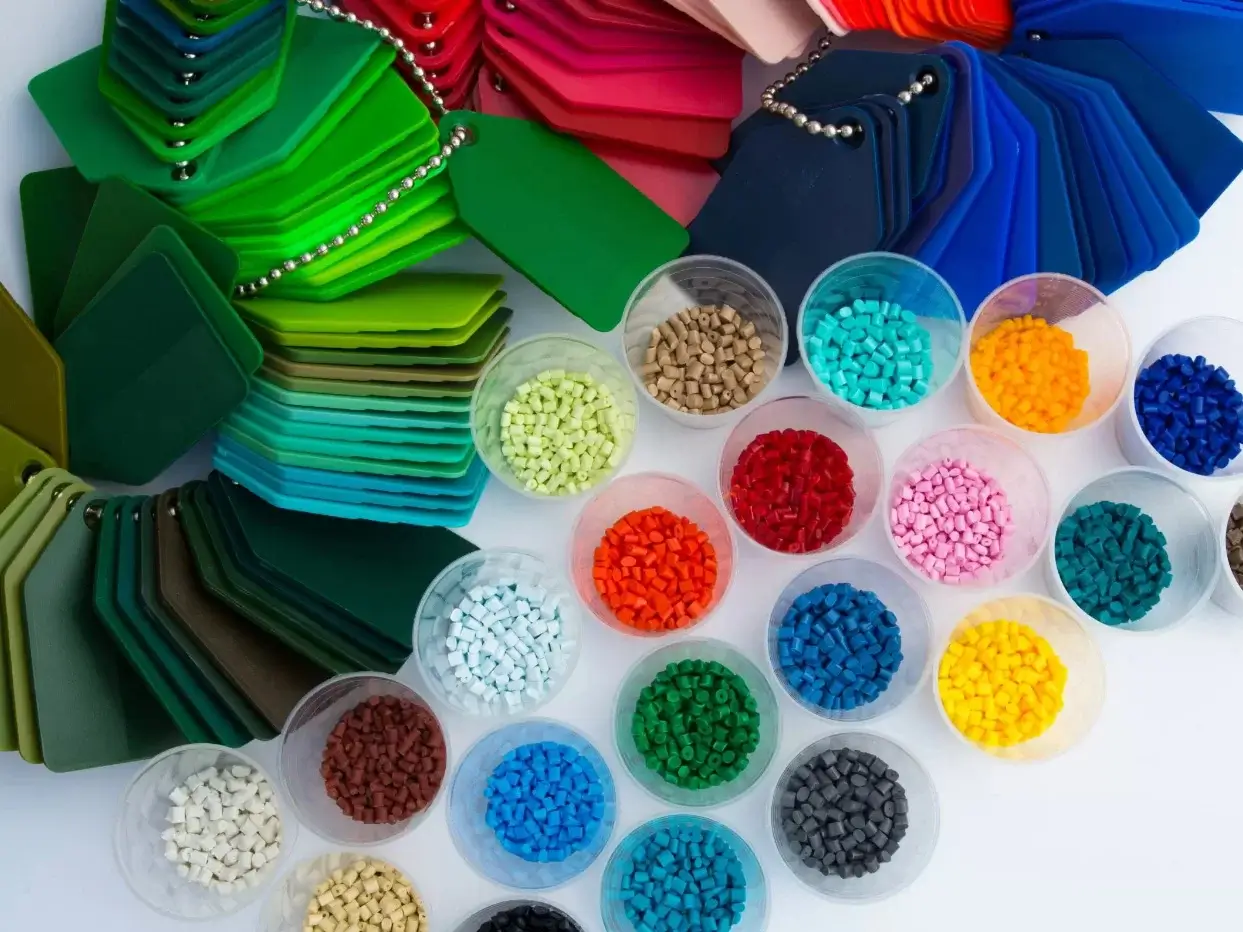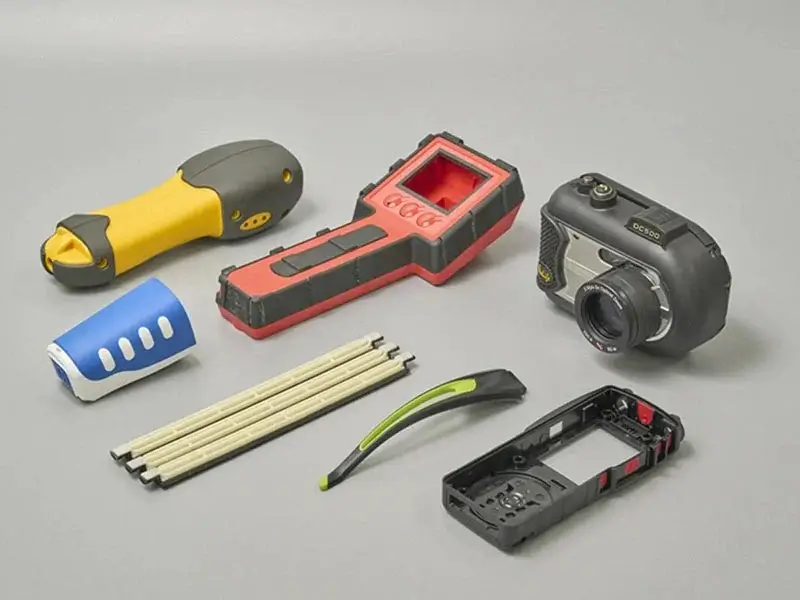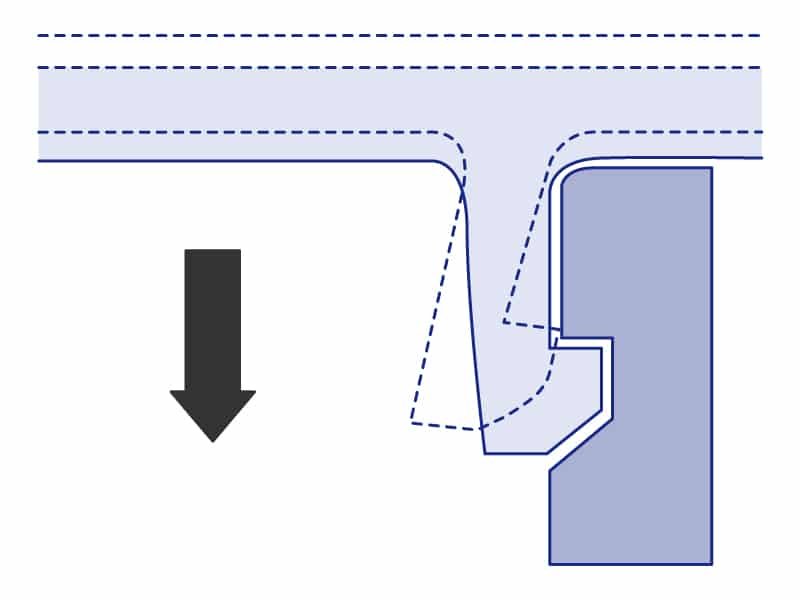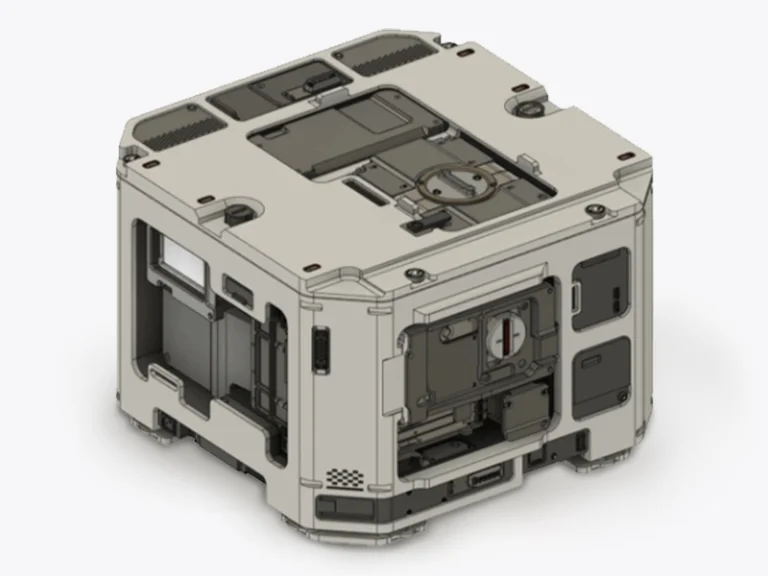In the realm of plastic injection molding, insert molding vs overmolding represents two advanced techniques that elevate part functionality by integrating multiple materials or components. These custom plastic molding processes are pivotal for industries like medical, automotive, and consumer electronics. This article delves into insert molding vs overmolding, comparing their definitions, processes, materials, advantages, applications, challenges, and selection criteria to guide informed decisions in custom plastic molding.
Overview of Insert Molding and Overmolding
What is Insert Molding?
Insert molding service is a plastic injection molding process where a pre-formed insert, such as a metal pin or plastic component, is placed in a mold, and molten plastic is injected around it to create a single, integrated part. This technique is ideal for embedding rigid elements securely within the plastic part for both structural reinforcement and functional purposes, such as threaded fasteners that ensure reliable and durable assembly. Insert molding service offers a streamlined way to craft robust, tailored parts, reducing assembly costs and enabling precise custom plastic molding solutions.
What is Overmolding?
Overmolding involves molding a second material—typically a soft elastomer or thermoplastic—over a pre-molded substrate (plastic or metal) to form a multi-material part. Often requiring multiple steps, overmolding enhances ergonomics, aesthetics, or functionality, such as adding soft grips or seals. Overmolding provides design flexibility to create user-friendly, visually appealing products, making it a versatile choice in the insert molding vs overmolding comparison.
Overmolding and Insert Molding Common Materials
Material selection is a cornerstone of insert molding vs overmolding, directly affecting customization outcomes in custom plastic molding. Insert molding materials should consider the robust bonding for structural inserts, and the overmolding requires compatible materials to achieve strong adhesion.
Insert Molding Materials
Inserts Materials: Metals (brass, stainless steel, aluminum) for strength or conductivity; pre-molded plastics for specific functions.
Plastics: Rigid thermoplastics like ABS, polycarbonate, nylon, or PEEK, chosen for durability and insert compatibility.
Overmolding Materials
Substrates: Rigid plastics (ABS, polycarbonate, polypropylene) or metals, providing a stable foundation.
Overmold Materials: Soft elastomers (TPE, TPU, silicone) or flexible thermoplastics, selected for comfort, sealing, or aesthetics.

Insert Molding Advantages
Its advantages stem largely from the combination of different materials and the integration of components:
- Enhanced Strength and Durability: By embedding sturdy inserts such as metal into plastic, insert molding produces parts with superior mechanical strength, rigidity, and wear resistance compared to plastic alone.
- Reduced Assembly and Labor Costs: Since the insert is molded directly into the plastic part, it eliminates the need for secondary assembly steps like fastening or bonding separate components. This reduces labor, assembly time, and the risk of assembly errors, improving manufacturing efficiency and lowering costs.
- Weight Reduction: Insert molding allows replacing heavier metal parts with lighter plastic materials while maintaining strength, contributing to overall product weight reduction.
- Design Flexibility: Insert molding supports a wide range of insert materials and plastic resins, enabling complex designs that integrate multiple functions (mechanical, electrical, aesthetic) into one part.
- Improved Product Quality: Precise placement of inserts during molding ensures consistent, repeatable quality with strong bonds between plastic and insert, enhancing performance and longevity.
Overmolding Advantages
Its advantages arise from combining different plastics in one integrated part:
- Improved Product Performance: Overmolding allows combining materials with complementary properties. This enhances impact resistance, chemical resistance, grip, comfort, and environmental protection.
- Greater Design Flexibility and Aesthetics: Multiple materials and colors can be combined in complex geometries, enabling ergonomic designs, improved tactile feel, and visually appealing products.
- Reduced Secondary Operations and Costs: By integrating multiple components into one molded part, overmolding eliminates bonding, assembly, or finishing steps, reducing labor, cycle time, and material waste.
- Enhanced Durability and Longevity: The strong chemical bonding between overmolded layers improves the part’s structural integrity and lifespan.
Differences Between Overmolding vs Insert Molding
Both insert molding and overmolding combine materials in one part and reduce assembly steps, but they differ in:
- Process: Insert molding molds plastic around a pre-made insert in one step. Overmolding forms a base part first, then adds a second layer in a separate step.
- Speed: Insert molding is generally faster, especially for large runs. Overmolding takes more time due to the two-stage process.
- Material Bonding: Overmolding offers strong chemical bonding without adhesives. Insert molding relies on mechanical bonding with embedded parts.
- Cost: Insert molding is more cost-effective for high volumes. Overmolding costs more due to extra tooling and steps.
- Applications: Insert molding suits metal-plastic parts like threaded inserts. Overmolding is ideal for soft grips, seals, and enhanced aesthetics.

Design Considerations for Insert Molding and Overmolding
Designing parts for insert molding and overmolding requires attention to material behavior, part geometry, and process constraints. Key design points for each process include:
Insert Molding – Design Guidelines
- Accurate Insert Placement: Prevent misalignment by securing insert positioning
- Locating Features: Use ribs, pins, or recesses to keep inserts stable during molding
- Encapsulation Geometry: Ensure the plastic fully surrounds the insert for strength
- Smooth Transitions: Avoid sharp corners to reduce internal stress
- Material Matching: Select plastics that bond well with metal or other inserts
- Draft Angles: Include proper draft for easy mold release
- Tight Tolerances: Control gaps between insert and molded plastic for part integrity
Overmolding – Design Guidelines
- Bonding Interface: Use surface textures, holes, or grooves to improve adhesion
- Wall Thickness: Maintain consistent overmold thickness to avoid warping
- Stress Management: Avoid sharp edges and sudden thickness changes
- Rigid Substrate: Ensure the base layer resists deformation during second shot
- Material Compatibility: Match shrinkage and thermal properties of both materials
- Precise Alignment: Add alignment features to maintain accuracy between shots
- Undercuts with Purpose: Only include undercuts where mechanical locking is needed
Insert Molding vs. Overmolding: Which Is Right for Your Project?
When choosing between insert molding and overmolding, it’s important to evaluate the needs of your product in terms of materials, performance, design, and cost. Here’s a practical guide to help you make the right decision:
1. Material Compatibility
- Use insert molding when you need to combine metal and plastic—for example, to achieve added strength or electrical conductivity.
- Choose overmolding when bonding two plastics or combining plastic with rubber-like materials, especially if grip, flexibility, or sealing is essential.
2. Performance Needs
- Insert molding is ideal for parts that require structural support, secure fasteners, or long-term durability under stress.
- Overmolding enhances user comfort, impact resistance, and insulation, making it suitable for consumer products, handles, and wearable components.
3. Design Complexity
- For simpler molding designs with discrete inserts, insert molding is the better choice.
- When your product calls for a multi-material structure or enhanced aesthetics, overmolding enables more creative, layered designs.
4. Cost Considerations
- While insert molding may reduce material usage, the tooling can be more complex and expensive.
- Overmolding involves more steps and materials, but can reduce post-production assembly, potentially lowering overall manufacturing costs in high-volume runs.
Common Applications of Overmolding and Insert Molding
Overmolding and insert molding are widely used across industries to enhance product function, durability, and user experience. Here’s how each is typically applied:
Overmolding Applications:
- Consumer goods – Soft-touch grips on toothbrushes, razors, power tools, and phone cases
- Medical devices – Sealed handles, ergonomic instruments, and protective casings
- Electronics – Water-resistant enclosures for USB drives, connectors, and control buttons
- Automotive parts – Vibration-dampening handles, knobs, and interior components
Insert Molding Applications:
- Electrical components – Metal contacts or threaded inserts in plugs, sockets, and housings
- Automotive – Reinforced mounts, brackets, and sensor housings
- Industrial equipment – Durable components combining metal and plastic for strength
- Medical – Surgical tools with embedded metal cores for precision and stability
Conclusion: Insert Molding vs Overmolding
Insert molding and overmolding is competitive relationship, but the real goal is to help you choose the right process for a product design. Jianghzi offers expert insert molding and overmolding services. Our team guides you in choosing the ideal insert molding overmolding solution, ensuring precision and quality for your tailored product. Welcome to contact us.








